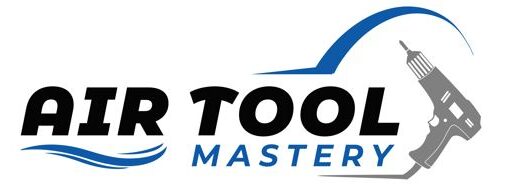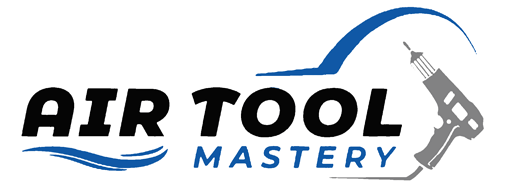Imagine you have a party balloon full of air and water, and you need to separate the two. Well, that’s what compressed air water separators are here for, but for industrial purposes. They are the superheroes when it comes to separating water from compressed air, making sure the air is dry before it reaches your pneumatic equipment. This process protects and extends the life of your tools or machinery. Knowing the ins and outs of these separators can lead to better operational efficiency, cost savings, and ultimately a smoother, more productive work environment.
Dry Compressed Air
Dry compressed air is of critical importance in industrial settings for several reasons. Primarily, moisture in compressed air can lead to the corrosion of pneumatic machinery and tools, leading to operational inefficiencies and, ultimately, costly repairs or replacements. Moreover, water in compressed air can impede the performance of delicate instrumentation, affecting the accuracy of measurements and the overall quality of work.
Also, specific industries, such as pharmaceuticals or food and beverage, require dry compressed air to meet regulatory standards and ensure product safety and quality. Hence, the use of compressed air water separators to ensure dry compressed air is not just a preference but a necessity in most industrial settings.
Understanding Compressed Air Water Separators
Compressed air water separators, also known as moisture separators, are essential components in compressed air systems. There are different types of separators available, including centrifugal and coalescing separators, each with its own unique design and application. However, the main function of all these separators is to remove both liquid and solid contaminants from compressed air.
The separation process typically involves three stages:
1. Inlet stage
The compressed air enters the separator through the inlet, which is usually at the top of the separator. As it does so, it loses its velocity and begins to expand, causing larger water droplets to settle to the bottom due to gravity.
2. Centrifugal force stage
In this stage, as air moves downward towards a lower chamber, it takes on a swirling motion. This movement creates centrifugal force, which propels any remaining water droplets towards the outer edges of the chamber.
3. Coalescing stage
In this final stage, the air passes through filters or coalescing media that capture any remaining liquid and solid contaminants. These filters are designed to have a higher affinity for water molecules, allowing them to coalesce (combine) and form larger droplets that can be easily drained from the bottom of the separator.
Key Components of a Compressed Air Water Separator
While the design and components of a compressed air water separator may vary depending on its type and manufacturer, there are some common elements that can be found in most systems. These include an inlet for contaminated air, a filtration system to remove contaminants, a drain valve to remove collected moisture, and an outlet for clean, dry air.
Benefits of Compressed Air Water Separators
The primary purpose of compressed air water separators is to remove moisture from compressed air. However, they offer several other benefits, including:
1. Protection for downstream equipment
Moisture in compressed air can cause damage to downstream equipment such as air tools, valves, and cylinders. By removing moisture, compressed air water separators help prolong the life of these components and reduce maintenance costs.
2. Improved air quality
Contaminants in compressed air can affect the quality of the end product or process. Compressed air water separators ensure that the air is free from moisture and solid particles, resulting in higher quality output.
3. Energy efficiency
Moisture in compressed air can also affect the overall efficiency of compressed air systems. By removing moisture, compressed air water separators help reduce energy consumption and lower operating costs.
4. Reduced downtime
Moisture in compressed air can cause corrosion and damage to equipment, leading to unexpected breakdowns and costly downtime. Compressed air water separators help prevent these issues and keep operations running smoothly.
5. Environmental benefits
Compressed air water separators not only improve the efficiency of compressed air systems, but they also have environmental benefits. By removing contaminants from the compressed air, they help reduce the release of harmful pollutants into the environment.
Types of Compressed Air Water Separators
Compressed air water separators come in various types and designs, each with its own unique features and benefits. Some common types include:
1. Centrifugal water separators
These separators use centrifugal force to separate moisture from compressed air. They are highly efficient and can handle large volumes of air.
2. Coalescing water separators
Coalescing separators use a filtration process to remove liquid droplets from compressed air. They are particularly effective in removing small water droplets and oil that may be present in the air.
3. Refrigerated dryers
Refrigerated dryers use a cooling process to condense moisture from compressed air, which is then drained out of the system. They are commonly used for applications that require low levels of moisture.
Maintenance and Care
To ensure optimal performance and longevity of a compressed air water separator, regular maintenance is essential. This includes regularly checking and replacing filters, draining collected moisture, and monitoring for any leaks or malfunctions.
Additionally, proper care should be taken to ensure that the system is installed correctly and in a suitable location to prevent any damage or obstructions.
The Importance of Compressed Air Water Separators
Compressed air water separators play a crucial role in maintaining the efficiency and longevity of compressed air systems. By removing contaminants such as moisture, oil, and other pollutants, they help prevent costly equipment damage and downtime. These separators also contribute to creating a cleaner and healthier working environment.
How to Install a Compressed Air Water Separator
Installing a compressed air water separator may vary depending on the type and model of the system. It is essential to follow the manufacturer’s instructions carefully for proper installation. However, below are some general steps that can guide you through the process:
Determine the appropriate location for installation
The separator should be installed in an area with adequate ventilation and away from any potential obstructions or sources of heat. It should also be easily accessible for maintenance and monitoring purposes.
Connect the separator to the compressed air system
Using appropriate fittings, connect the inlet and outlet pipes of the separator to the compressed air system. Ensure that all connections are secure to prevent any leaks.
Install necessary filters
Some separators may require additional filters for optimal performance. Follow the manufacturer’s instructions to install any necessary filters properly.
Install a drain valve
Most separators come with a drain valve that allows for the removal of collected water and other contaminants. Ensure that the drain valve is installed correctly and easily accessible for routine maintenance.
Begin operation
Once installation is complete, test the system to ensure proper functioning. Monitor the separator regularly to check for any potential issues and perform the required maintenance as specified by the manufacturer.
Maintaining Your Compressed Air Water Separator
Proper maintenance of a compressed air water separator is crucial for optimal performance and longevity. Here are some general tips to keep your separator in top condition:
- Regularly drain the collected water and contaminants from the system using the designated drain valve.
- Replace any necessary filters according to the manufacturer’s instructions.
- Inspect the system regularly for potential leaks or other issues.
- Keep the separator and surrounding area clean to prevent any buildup of contaminants.
- Consult with a professional if any issues arise or for routine maintenance.
By following these simple maintenance steps, you can ensure that your compressed air water separator continues to operate efficiently and effectively, providing clean and dry compressed air for your needs. Be sure to also refer to the manufacturer’s specific maintenance instructions for your particular system.
Conclusion
Compressed air water separators play a crucial role in keeping compressed air systems functioning properly. By removing water and contaminants from the system, they prevent damage to equipment and ensure clean and dry air for various applications. Proper installation, operation, and maintenance are key to getting the most out of your compressed air water separator.
Consult with a professional if you have any questions or concerns about your system, and always follow the manufacturer’s instructions for optimal performance. With proper care, your compressed air water separator will continue to provide reliable operation for years to come. So if you haven’t already, make sure to invest in a high-quality compressed air water separator and keep up with regular maintenance to reap the benefits of clean and dry compressed air.

